| Srl | Item |
| 1 |
ID:
076026
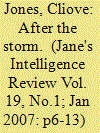

|
|
|
| 2 |
ID:
090199
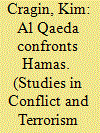

|
|
|
|
|
| Publication |
2009.
|
| Summary/Abstract |
Almost eight years after the September 2001 attacks, U.S. counterterrorism strategy would benefit from a clearer definition of its adversaries. Some have suggested that U.S. counterterrorism policy focus primarily on Sunni jihadists. This term would account for groups such as Al Qaeda and the Abu Sayyaf Group in the Philippines, but not Shi'ite militias in Iraq or Hizbullah. Although any attempt to narrow the scope of U.S. counterterrorism strategy has merit, it is worth noting that important distinctions exist between the various groups. To explore these distinctions, this article examines the different historical trajectories and current arguments between two of the most well-known Sunni jihadists: Al Qaeda and Hamas.
|
|
|
|
|
|
|
|
|
|
|
|
|
|
|
|
| 3 |
ID:
083818
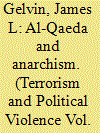

|
|
|
|
|
| Publication |
2008.
|
| Summary/Abstract |
This article situates al-Qaeda and similar jihadi movements within the category of anarchism. In so doing, it challenges the central pillar of the terrorology paradigm: the notion that terrorism is useful as an independent unit of analysis. The article takes a two-fold approach; in the first part, it offers a five-part definition of anarchism, based on the literature in the fields of history, political science, and sociology. Anarchism is distinguished by five characteristics: First, anarchism is an episodic discourse which provides its adherents with a prescription for action and which has been consistently available to, but only sometimes adopted by, political actors in the modern world. Second, anarchism makes for itself the claim of being defensive in nature. Third, anarchism is anti-systemic; i.e., the target of anarchist grievances is the very system (the nation-state system, capitalism) anarchists view as the source of oppression. Fourth, by "othering" the source of oppression, anarchists delineate, either implicitly or explicitly, an ideal counter-community. Finally, unlike the disarticulated domain of, for example, scientific socialism, the discursive field of anarchism draws heavily from the specific cultural milieu from which it springs. The second part of the article examines al-Qaeda and similar movements in terms of these five characteristics, contrasts al-Qaeda with other organizations (Hamas, Hizbullah) which have often been conflated with al-Qaeda under the terrorist rubric, and argues that, based on those characteristics, al-Qaeda does not represent a new or sui generis phenomenon, but rather fits squarely into the anarchist mold.
|
|
|
|
|
|
|
|
|
|
|
|
|
|
|
|
| 4 |
ID:
055041
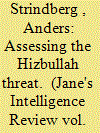

|
|
|
| 5 |
ID:
125356
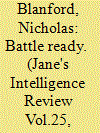

|
|
|
|
|
| Publication |
2013.
|
| Summary/Abstract |
As Hizbullah's fighting forces undergoes expansion, the number of its training facilities for urban operations is also increasing. Nicholas Blanford examines the group's use of these centres and the effect they are likely to have on its tactical capabilities.
|
|
|
|
|
|
|
|
|
|
|
|
|
|
|
|
| 6 |
ID:
189996


|
|
|
| 7 |
ID:
103519
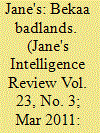

|
|
|
| 8 |
ID:
149821


|
|
|
|
|
| Summary/Abstract |
Insurgent movements have proliferated in ungoverned spaces in the Middle East and beyond. Jonathan Spyer examines the ways in which these groups tactics are changing to accommodate the semi-conventional role that they are increasingly playing.
|
|
|
|
|
|
|
|
|
|
|
|
|
|
|
|
| 9 |
ID:
157438
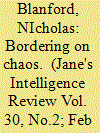

|
|
|
| 10 |
ID:
152694
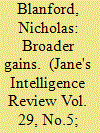

|
|
|
| 11 |
ID:
115479
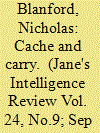

|
|
|
| 12 |
ID:
076818
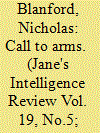

|
|
|
| 13 |
ID:
129317
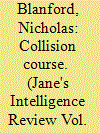

|
|
|
| 14 |
ID:
142967
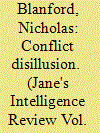

|
|
|
| 15 |
ID:
101811
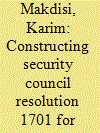

|
|
|
|
|
| Publication |
2011.
|
| Summary/Abstract |
This article argues that the 'war on terror' gave global meaning to the 2006 Israel-Lebanon war and to the construction of UN Security Council resolution 1701 that authorized the deployment of robust UN peacekeepers in southern Lebanon (UNIFIL). It uses a critical, discursive approach to argue that UN resolutions have embedded in them a particular, powerful discourse, in this case the 'war on terror'. This discourse grounded a global struggle for and against US domination of the region in a local power dispute in Lebanon between 2004 and 2008. It concludes that Israel's failure to defeat Hizbullah militarily resulted in resolution 1701 comprising two contradictory narratives that represented the battle for and against US domination, and that the subsequent battle for hegemonic articulation of this resolution weakened, rather than strengthened the Lebanese state during 2006-08, plunging Lebanon into internal strife until the signing of a national peace accord in Doha in May 2008.
|
|
|
|
|
|
|
|
|
|
|
|
|
|
|
|
| 16 |
ID:
163703
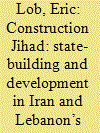

|
|
|
|
|
| Summary/Abstract |
Based on fieldwork in Iran and Lebanon, this article compares the Iranian reconstruction and development organisation Construction Jihad with its Hizbullah-affiliated subsidiary in Lebanon. Beyond shedding light on Iranian and Lebanese history and politics, this comparison offers insight into the transnational diffusion of a development organisation by a state actor to its non-state or quasi-state ‘client’ in the Muslim and developing world. Despite the distinct environmental and operational conditions of Iran and Lebanon, Construction Jihad similarly assisted a nascent Islamic Republic of Iran (IRI) and a fledgling Hizbullah with state-building. The latter consisted of consolidating coercive power against domestic and foreign opponents, increasing administrative capacity through service provision and post-war reconstruction, and strengthening the political and religious identity of citizens and constituents. Regardless of the differing contexts of Iran and Lebanon, Construction Jihad counter-intuitively possessed a similar organisational and developmental model in both countries that did not neatly conform to the dichotomous typologies in development studies. This seemingly contradictory model was largely faith based, exclusive, distributive and top down with certain decentralised, community driven and participatory elements.
|
|
|
|
|
|
|
|
|
|
|
|
|
|
|
|
| 17 |
ID:
153225
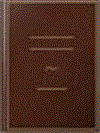

|
|
|
|
|
| Publication |
New Delhi, KW Publishers Pvt Ltd, 2017.
|
| Description |
ix, 322p.hbk
|
| Standard Number |
9789386288042
|
|
|
|
|
|
|
|
|
|
|
|
Copies: C:1/I:0,R:0,Q:0
Circulation
| Accession# | Call# | Current Location | Status | Policy | Location |
| 059116 | 320.5570956/ASH 059116 | Main | On Shelf | General | |
|
|
|
|
| 18 |
ID:
149689
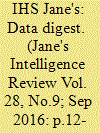

|
|
|
| 19 |
ID:
129217
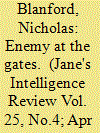

|
|
|
| 20 |
ID:
182846
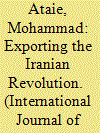

|
|
|
|
|
| Summary/Abstract |
From the dawn of the 1978–79 Iranian Revolution until the consolidation of Hizbullah in the late 1980s, a network of Iranian, Lebanese, and Palestinian clerics played a crucial role in spreading the revolution to Lebanon and laying the groundwork for Hizbullah. Whereas the historiography of the post-1979 Iran–Lebanon relationship is overwhelmingly focused on Hizbullah, the present study, by drawing on oral history interviews with these clerics and archival materials, contends that the Iranian Revolution came to Lebanon primarily through these Shi‘i and Sunni clerics, who joined ranks and established the Association of Muslim ‘Ulama’ in Lebanon in the wake of the 1982 Israeli invasion. This study argues that these clerics modeled their struggle on the ‘ulama’-led and mosque-based example of the 1978–79 revolution, which this paper describes as the Khomeinist script, to transcend sect to seed a revolution in Lebanon and mass mobilize against the invasion. This article concludes that the ecumenical script was highly appealing to non-Shi‘i Islamists, a key factor in the success of exporting the revolution and the rise of Hizbullah in Lebanon.
|
|
|
|
|
|
|
|
|
|
|
|
|
|
|
|